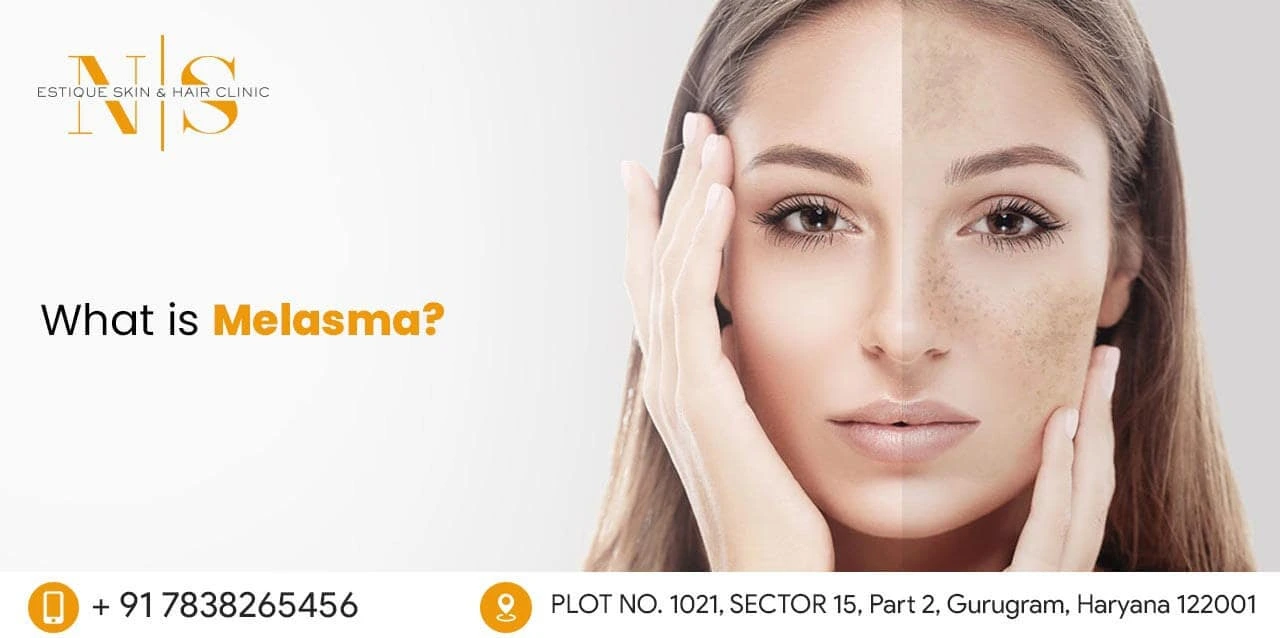WHAT IS MELASMA

WHAT IS MELASMA
Melasma is a skin disease marked by dark, brown, and blue-gray discoloration patches of skin, and it is most often found in women in the middle of their reproductive years. Melasma is a type of facial pigmentation, usually found in three areas of the face: the jawline, the central part of the face, and the cheekbones. Most people would find melasma on their nose, mouth, and forehead but it can occur on other parts of the body, like the back, chest, or arms — or any skin patch that sees the sun a lot.
Melasma has no permanent health consequences but such patches may cause pain and embarrassment. The Bonne News? There are plenty of ways to determine the skin’s condition based on appearance. Let’s discuss the causes of melasma and find the ways you should handle it to prevent potential discolouration.
WHAT CAUSES MELASMA?
The exact cause of the melasma has yet to be determined by experts. Researchers assume the dark patches can occur when too much color is produced by the color producing cells (melanocytes) of the skin. That’s why people with brown skin have a greater risk of developing melasma; they have more active melanocytes than those with fair skin
- 1 – Hormonal Fluctuations
- 2 – Sun Exposure
- 3 – Genetics
Three key factors may cause the presence and intensity of melasma: hormonal variations, exposure to the sun and genetics.
Let’s take an in-depth look at two of these melasma causes.
- Hormonal fluctuations: Any hormone change can cause melasma. Pregnant women undergo major hormonal variations, and melasma is so widespread during puberty that it is called the “Pregnancy Mask.” Birth control and hormonal replacement medication can also lead to hyperpigmentation.
- Sun exposure: Ultraviolet rays in your skin can activate the melanocytes, and exposure to the sun can make melasma worse. That is why melasma tends to get worse in the summer, and when you spend too much time in the sun, fading hyperpigmentation can return.
OTHER REASONS
The disorder also has to do with the sensitivity to estrogen and progesterone. That means pills for birth control, abortion and hormone therapy may all cause melasma. Stress and thyroid disease are also suspected to be causing melasma
AVOIDING & CONTROLLING MELASMA
Some of the most important things you can do to keep melasma from getting worse is to shield yourself from UV radiation. It means avoiding the glare, wearing a wide-brimmed hat while outside and applying wide-spectrum sun cream (SPF 30 or higher, with high UVA rating)
TREATMENT OPTIONS
Treatment options for melasma include:
1) Topicals like glycolic acid, licorice, kojic acid, Alpha arbutin under recommended concentrations can help melasma. 2) Chemical peel which are recommended by dermatologists by analysing the depth of pigmentation and skin type are extremely beneficial. 3)Lasers

.png)
.png)

Copyright 2017-2025© Estique Skin And Hair Clinic. Privacy-Policy | Sitemap

